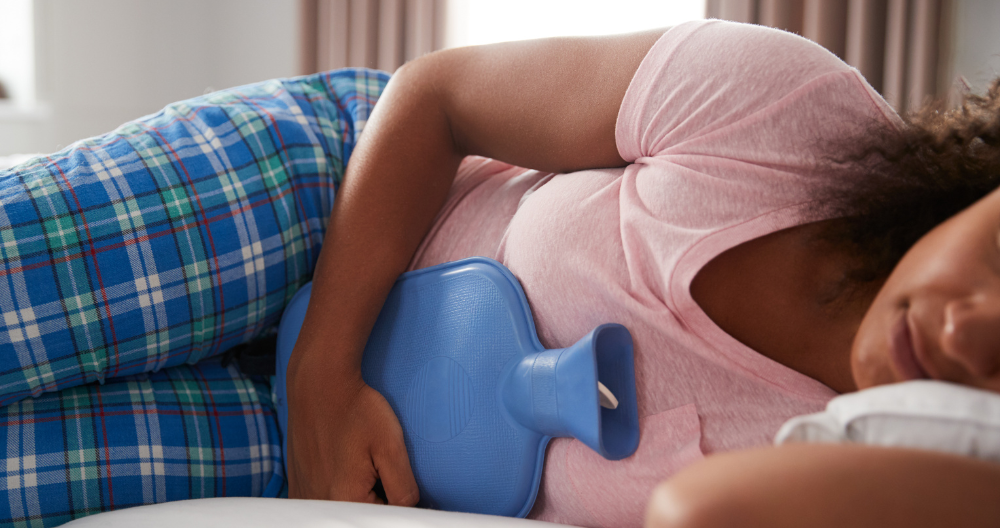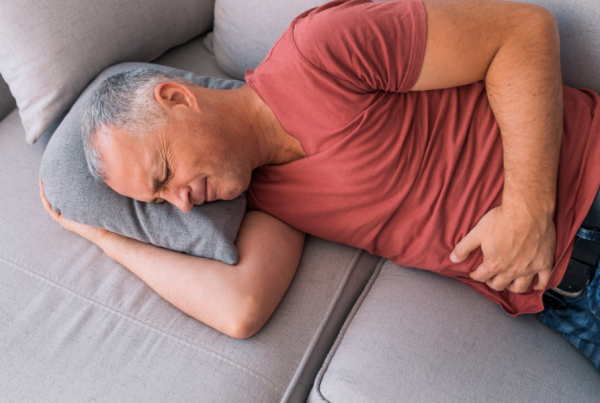Chronic Pelvic Inflammatory Disease (PID)
Move Better. Live Fuller. Your Wellness Journey Starts Here.
Schedule a FREE Discovery Call!
What Is Pelvic Inflammatory Disease (PID)?
Pelvic inflammatory disease is an infection or inflammation of one or multiple parts of the reproductive system, including the uterus, vagina, fallopian tubes, and other related areas. The infection begins when bacteria passes through the cervix from your vagina and spreads to other locations.
Typically, the cervix prevents bacteria from entering these areas—but when they do pass through, it can create infection and cause symptoms that begin in a few days or even a few months, depending on the cause.

For some, this condition can be acute, causing sudden and short-term symptoms—or chronic, causing long-term symptoms that may grow gradually. In some cases, individuals with PID may have very mild or even no symptoms, especially in the beginning stages of chronic PID. This can make it more difficult to diagnose until there are more pressing symptoms. The symptoms of this infection commonly include:
- Pelvic or abdominal pain
- Painful menstruation
- Irregular menstruation
- Pain during ovulation
- Painful or difficult urination
- Heavy vaginal discharge that may change in appearance or smell
- Painful intercourse
- In extreme cases: fever, nausea or vomiting, and severe pelvic pain
Unfortunately, leaving pelvic inflammatory disease untreated can cause more severe complications like infertility, pregnancy complications, or damage to the reproductive system. Therefore, it is very important to schedule regular health visits, and if you are sexually active, get tested for STIs at least once per year. This way, you have a higher chance of catching conditions like PID early on and preventing more severe side effects.
What Causes PID?
As mentioned before, pelvic inflammatory disease is created by infection or inflammation. Although a very common cause of PID is sexually transmitted infection (STI), this is not the only cause. Even the normal bacteria present in your vagina can cause PID, although other causes like this are a lot more rare. Causes of PID can include:
- Sexually transmitted infections such as gonorrhoea, chlamydia, and mycoplasma genitalium. These account for the majority of PID cases.
- Other infections such as bowel or vaginal infections.
- In rare cases, bacteria can be spread during procedures such as IUD insertion, surgical abortion, pelvic surgery, childbirth, miscarriage, etc.
There are also a number of factors that can increase your chances of having PID, particularly in the case of STIs:
- Being between the ages of 15 and 25
- Being sexually active
- Having multiple sexual partners
- Not using a physical form of birth control (condom)
- Using a douche often
- Having a history of STIs or PID
The best way to prevent pelvic inflammatory disease is to get tested often and to practice safe sex. In some cases, those with an infection may have it flare up again if it is not treated properly, causing recurrent pelvic inflammatory disease. If someone has experienced past damage from PID, they are more likely to experience it again.
Unfortunately, those who have experienced damage to the reproductive system because of long-term or recurrent episodes of PID are more likely to have chronic pelvic pain and other complications such as residual scarring and adhesions. However, individuals in this case as well as other cases of non-chronic PID can better manage their symptoms with pelvic floor physical therapy.
Physical Therapy for PID
Physical therapy is not a treatment for pelvic inflammatory disease (direct treatment typically involves antibiotics) but is very useful for managing the symptoms of PID, especially for those who experience recurrent PID or who have long-term symptoms from past infections. Pelvic floor physical therapy is very effective in managing pain by ensuring muscle function, mobility, and flexibility in the pelvic floor and other related areas.
PID commonly causes pain in a variety of ways—in the pelvis, during intercourse, with urination, or by worsening menstrual pain. All of these pain-related symptoms can create a lot of muscle tension throughout the pelvis and pelvic floor, which can only worsen symptoms and cause more problems with pelvic floor dysfunction. These tightened muscles can create more bladder and bowel-related problems, worsen sexual discomfort, and exacerbate pain throughout your pelvis and abdomen.
Your physical therapist will work to relieve muscle tension and improve function of the pelvic floor, which will relieve pain caused by pelvic inflammatory disease, scarring, or adhesions. To optimize pelvic floor health, they will use a variety of methods such as the following:
- Strengthening your pelvic floor muscles with curated exercises
- Relieving your muscle tension and pain with manual therapy (tissue scraping, cupping, and other hands-on techniques)
- Improving your mobility and flexibility with stretching
- Improving your muscle coordination with biofeedback and neuromuscular re-education
Additionally, your pelvic floor physical therapist will address any habits you may have that can worsen muscle tension and exacerbate your pain. This can involve:
- Correcting your sitting or standing posture to alleviate pressure on the pelvis
- Addressing any bathroom habits or toilet posture that can negatively impact your pelvic floor
- Teaching you how to practice pain management at home
To further address muscle tension that can create sexual dysfunction, your pelvic floor physical therapist can teach you relaxation techniques to reduce anxiety and relax your pelvic floor muscles. If necessary, they can suggest a variety of tools, supportive aids, and positions that can reduce pain and improve sexual comfort.
At Hive Therapy and Wellness, you can expect a wide range of treatment methods that extend further than just relieving pain from pelvic inflammatory disease in the clinic. Hive’s physical therapists want you to succeed at home too, and will provide education to help you manage your symptoms on your own as well. Therefore, you can expect to be prescribed exercises or lifestyle changes to support a preventive approach to your pelvic pain.
While in the clinic, you can expect a variety of pain-relieving treatments and other methods to improve your overall pelvic health, including any of the following:
- Neuromuscular re-education
- Manual therapy
- Exercise prescription
- Behavioral modifications
- Therapeutic activities
- Biofeedback
Pelvic inflammatory disease is an infection or inflammation of one or multiple parts of the reproductive system, including the uterus, vagina, fallopian tubes, and other related areas.
The infection begins when bacteria passes through the cervix from your vagina and spreads to other locations.
Typically, the cervix prevents bacteria from entering these areas—but when they do pass through, it can create infection and cause symptoms that begin in a few days or even a few months, depending on the cause.
For some, this condition can be acute, causing sudden and short-term symptoms—or chronic, causing long-term symptoms that may grow gradually.
In some cases, individuals with PID may have very mild or even no symptoms, especially in the beginning stages of chronic PID. This can make it more difficult to diagnose until there are more pressing symptoms. The symptoms of this infection commonly include:
- Pelvic or abdominal pain
- Painful menstruation
- Irregular menstruation
- Pain during ovulation
- Painful or difficult urination
- Heavy vaginal discharge that may change in appearance or smell
- Painful intercourse
- In extreme cases: fever, nausea or vomiting, and severe pelvic pain
Unfortunately, leaving pelvic inflammatory disease untreated can cause more severe complications like infertility, pregnancy complications, or damage to the reproductive system.
Therefore, it is very important to schedule regular health visits, and if you are sexually active, get tested for STIs at least once per year. This way, you have a higher chance of catching conditions like PID early on and preventing more severe side effects.
As mentioned before, pelvic inflammatory disease is created by infection or inflammation. Although a very common cause of PID is sexually transmitted infection (STI), this is not the only cause.
Even the normal bacteria present in your vagina can cause PID, although other causes like this are a lot more rare. Causes of PID can include:
- Sexually transmitted infections such as gonorrhoea, chlamydia, and mycoplasma genitalium. These account for the majority of PID cases.
- Other infections such as bowel or vaginal infections.
- In rare cases, bacteria can be spread during procedures such as IUD insertion, surgical abortion, pelvic surgery, childbirth, miscarriage, etc.
There are also a number of factors that can increase your chances of having PID, particularly in the case of STIs:
- Being between the ages of 15 and 25
- Being sexually active
- Having multiple sexual partners
- Not using a physical form of birth control (condom)
- Using a douche often
- Having a history of STIs or PID
The best way to prevent pelvic inflammatory disease is to get tested often and to practice safe sex. In some cases, those with an infection may have it flare up again if it is not treated properly, causing recurrent pelvic inflammatory disease.
If someone has experienced past damage from PID, they are more likely to experience it again.
Unfortunately, those who have experienced damage to the reproductive system because of long-term or recurrent episodes of PID are more likely to have chronic pelvic pain and other complications such as residual scarring and adhesions.
However, individuals in this case as well as other cases of non-chronic PID can better manage their symptoms with pelvic floor physical therapy.
Physical therapy is not a treatment for pelvic inflammatory disease (direct treatment typically involves antibiotics) but is very useful for managing the symptoms of PID, especially for those who experience recurrent PID or who have long-term symptoms from past infections.
Pelvic floor physical therapy is very effective in managing pain by ensuring muscle function, mobility, and flexibility in the pelvic floor and other related areas.
PID commonly causes pain in a variety of ways—in the pelvis, during intercourse, with urination, or by worsening menstrual pain. All of these pain-related symptoms can create a lot of muscle tension throughout the pelvis and pelvic floor, which can only worsen symptoms and cause more problems with pelvic floor dysfunction.
These tightened muscles can create more bladder and bowel-related problems, worsen sexual discomfort, and exacerbate pain throughout your pelvis and abdomen.
Therefore, your physical therapist will work to relieve muscle tension and improve function of the pelvic floor, which will relieve pain caused by pelvic inflammatory disease, scarring, or adhesions. To optimize pelvic floor health, they will use a variety of methods such as the following:
- Strengthening your pelvic floor muscles with curated exercises
- Relieving your muscle tension and pain with manual therapy (tissue scraping, cupping, and other hands-on techniques)
- Improving your mobility and flexibility with stretching
- Improving your muscle coordination with biofeedback and neuromuscular re-education
Your pelvic floor physical therapist will address any habits you may have that can worsen muscle tension and exacerbate your pain. This can involve:
- Correcting your sitting or standing posture to alleviate pressure on the pelvis
- Addressing any bathroom habits or toilet posture that can negatively impact your pelvic floor
- Teaching you how to practice pain management at home
To further address muscle tension that can create sexual dysfunction, your pelvic floor physical therapist can teach you relaxation techniques to reduce anxiety and relax your pelvic floor muscles.
If necessary, they can suggest a variety of tools, supportive aids, and positions that can reduce pain and improve sexual comfort.
At Hive Therapy and Wellness, you can expect a wide range of treatment methods that extend further than just relieving pain from pelvic inflammatory disease in the clinic.
Hive’s physical therapists want you to succeed at home too, and will provide education to help you manage your symptoms on your own as well. Therefore, you can expect to be prescribed exercises or lifestyle changes to support a preventive approach to your pelvic pain.
While in the clinic, you can expect a variety of pain-relieving treatments and other methods to improve your overall pelvic health, including any of the following:
- Neuromuscular re-education
- Manual therapy
- Exercise prescription
- Behavioral modifications
- Therapeutic activities
- Biofeedback
You can learn more about these treatments on our Treatments Page.





